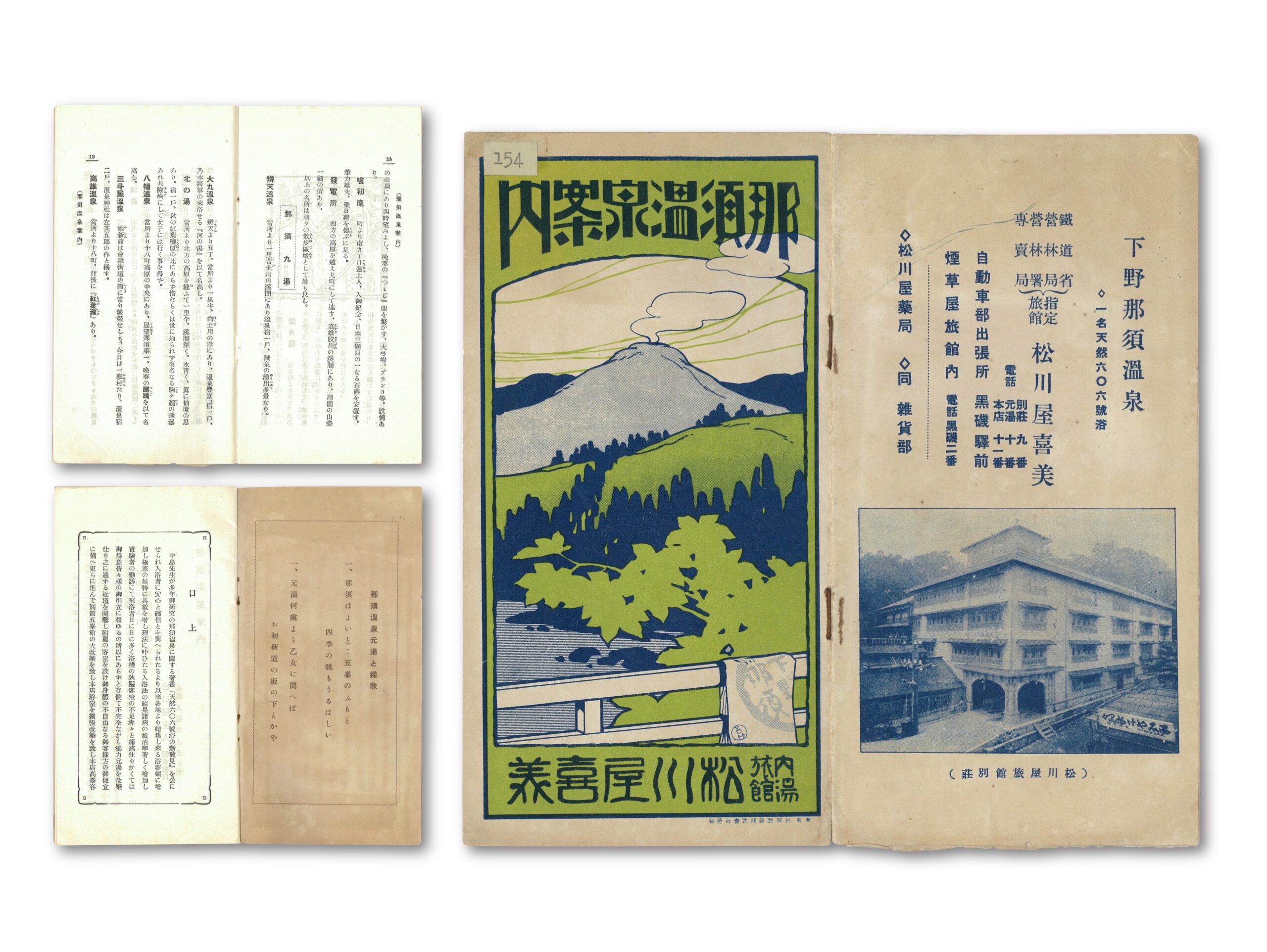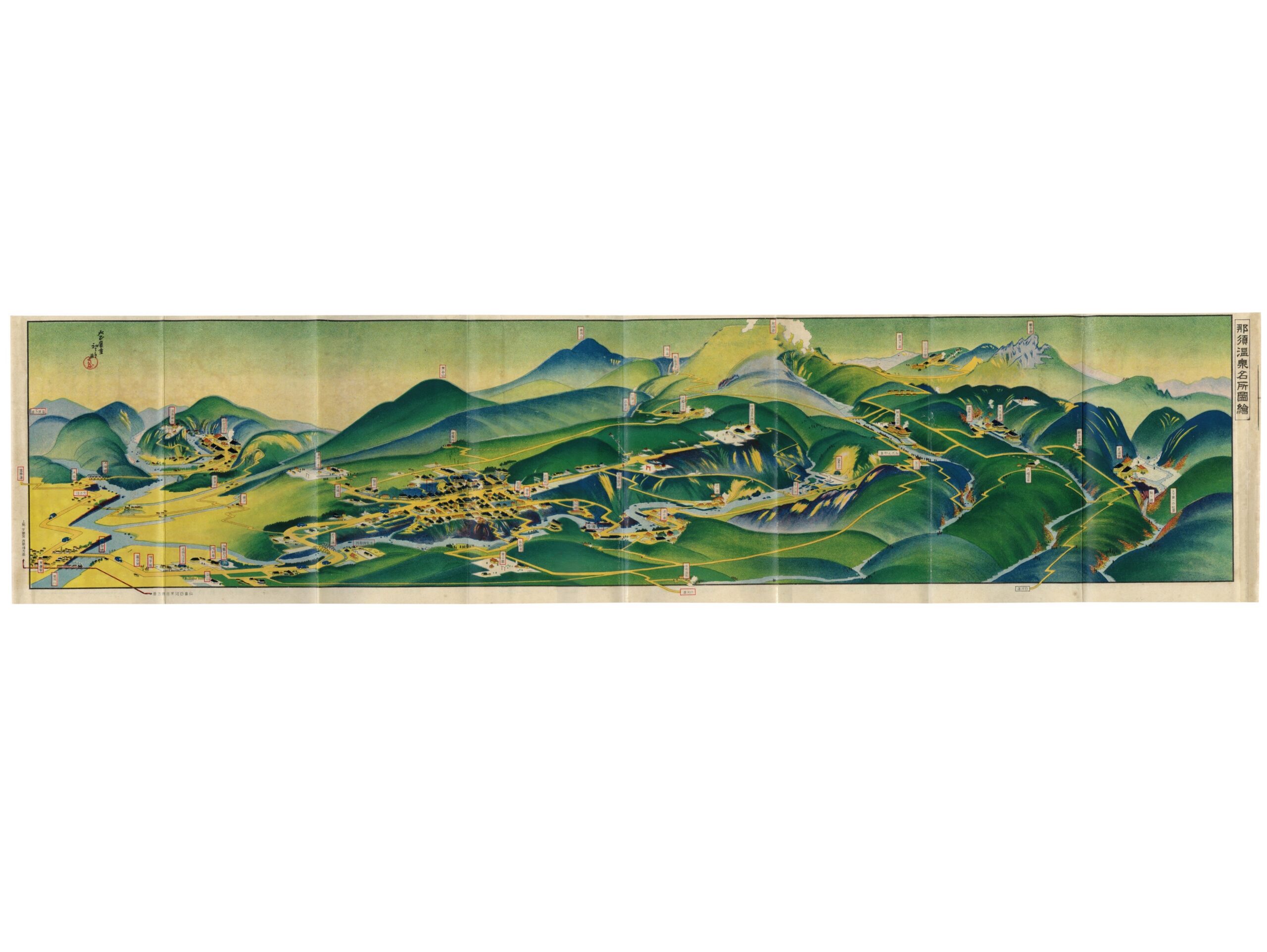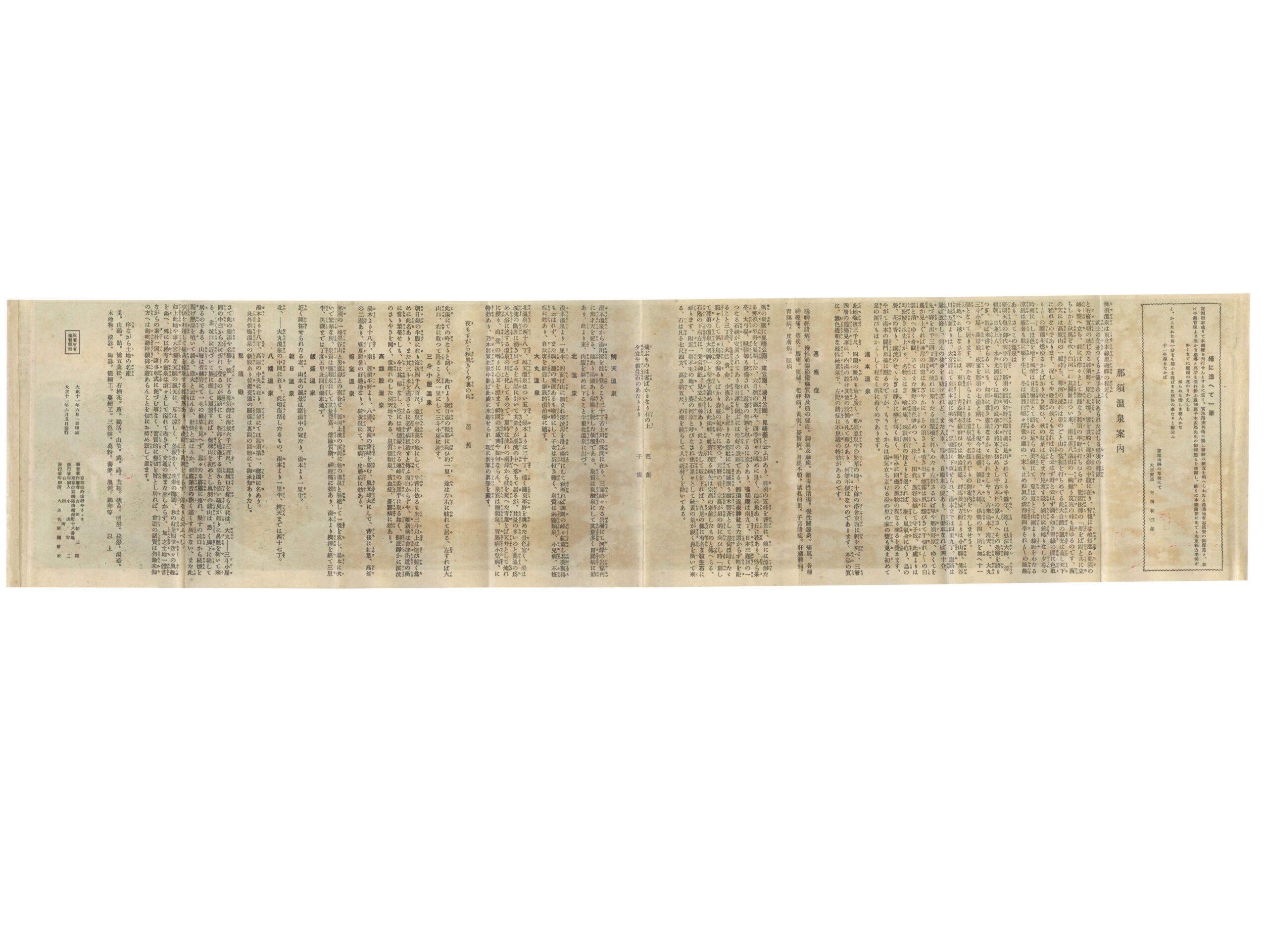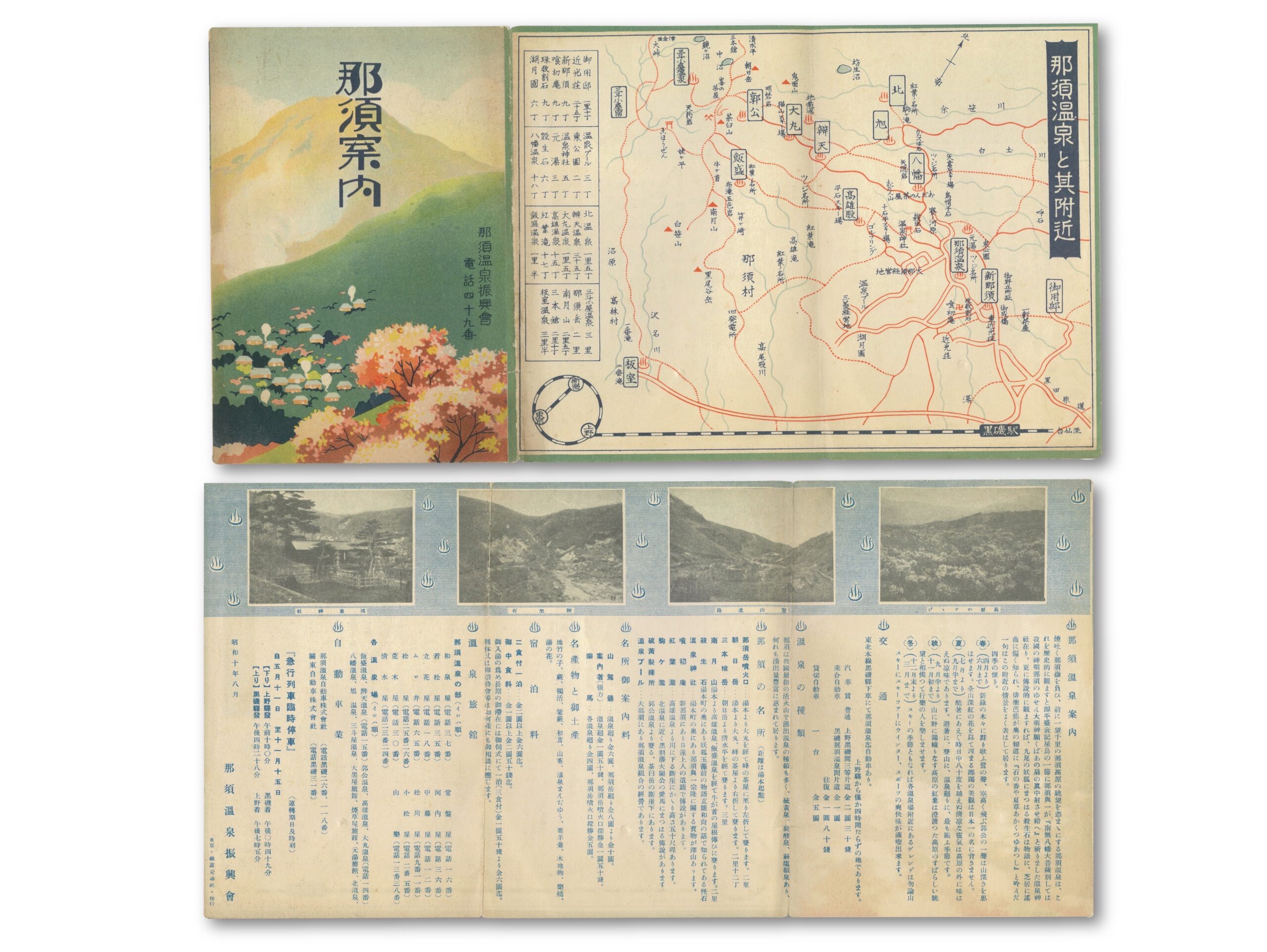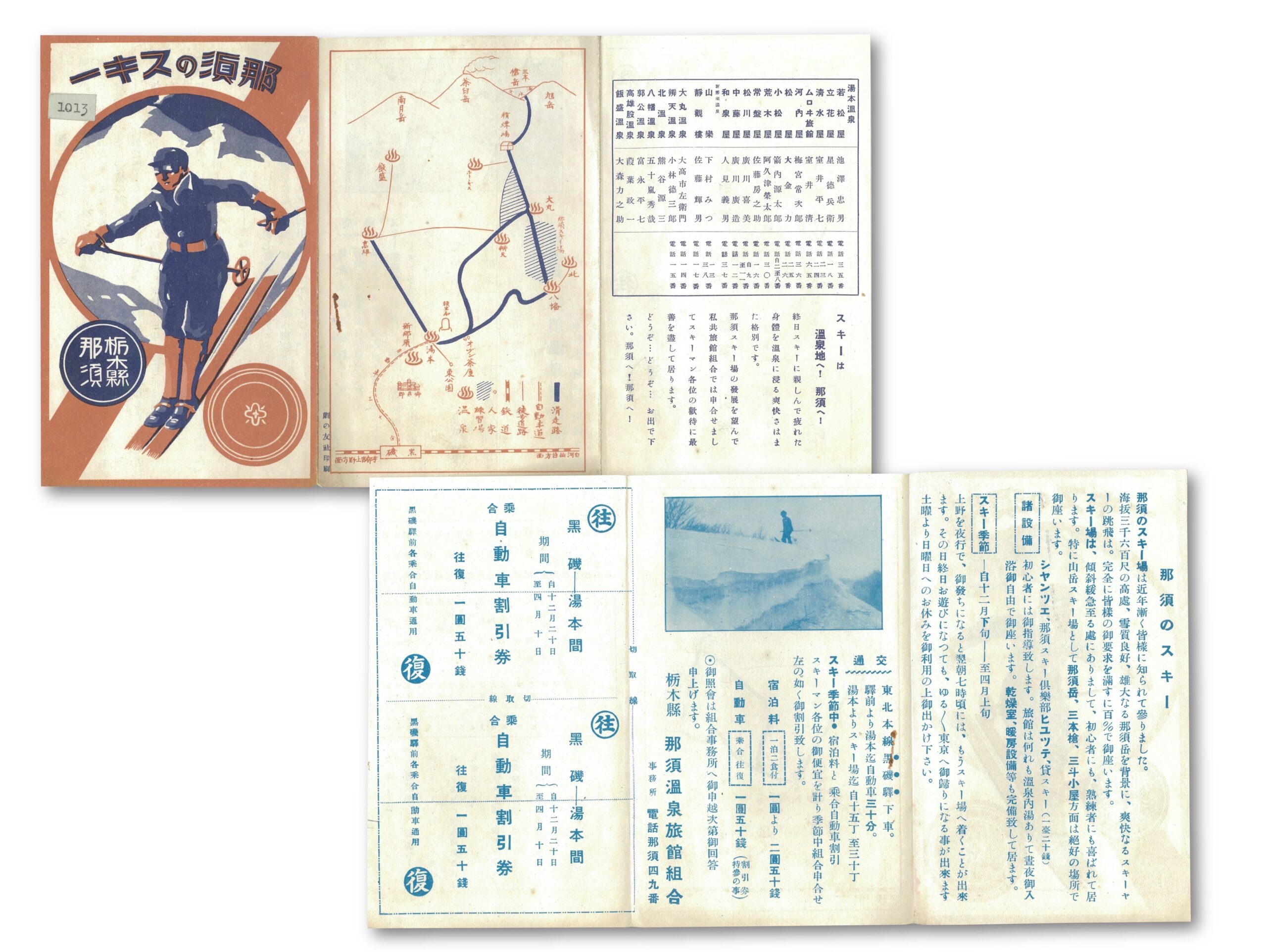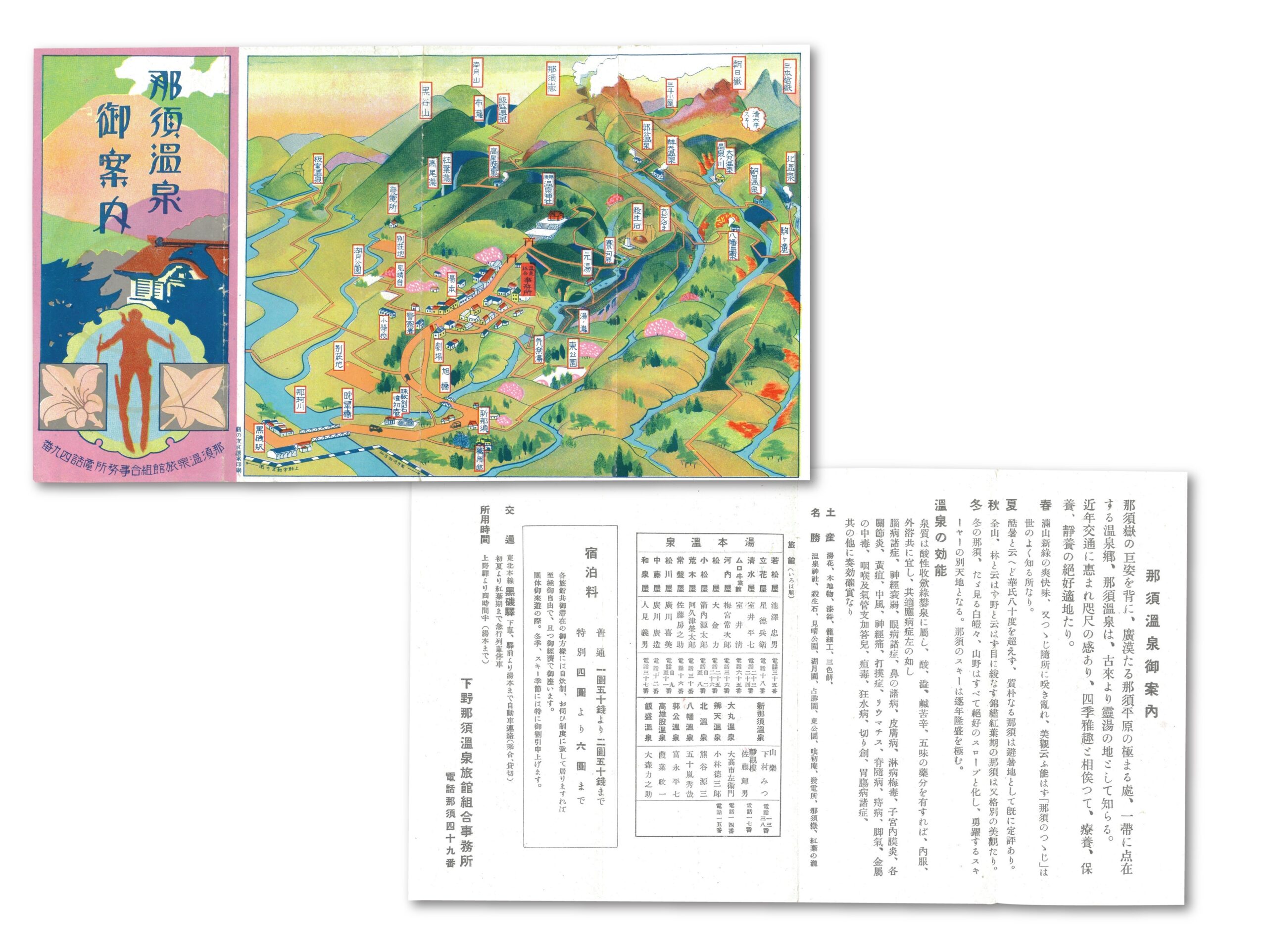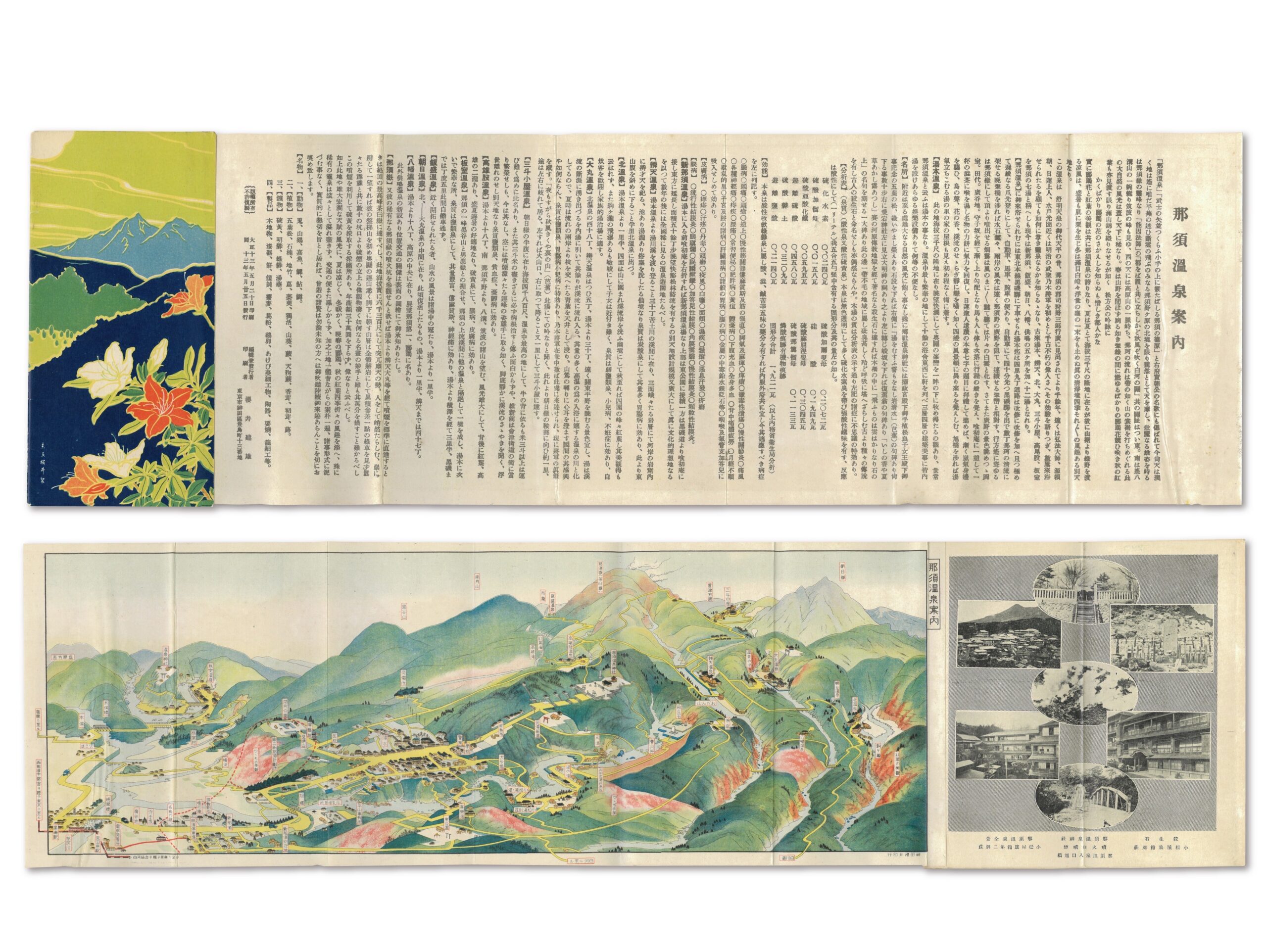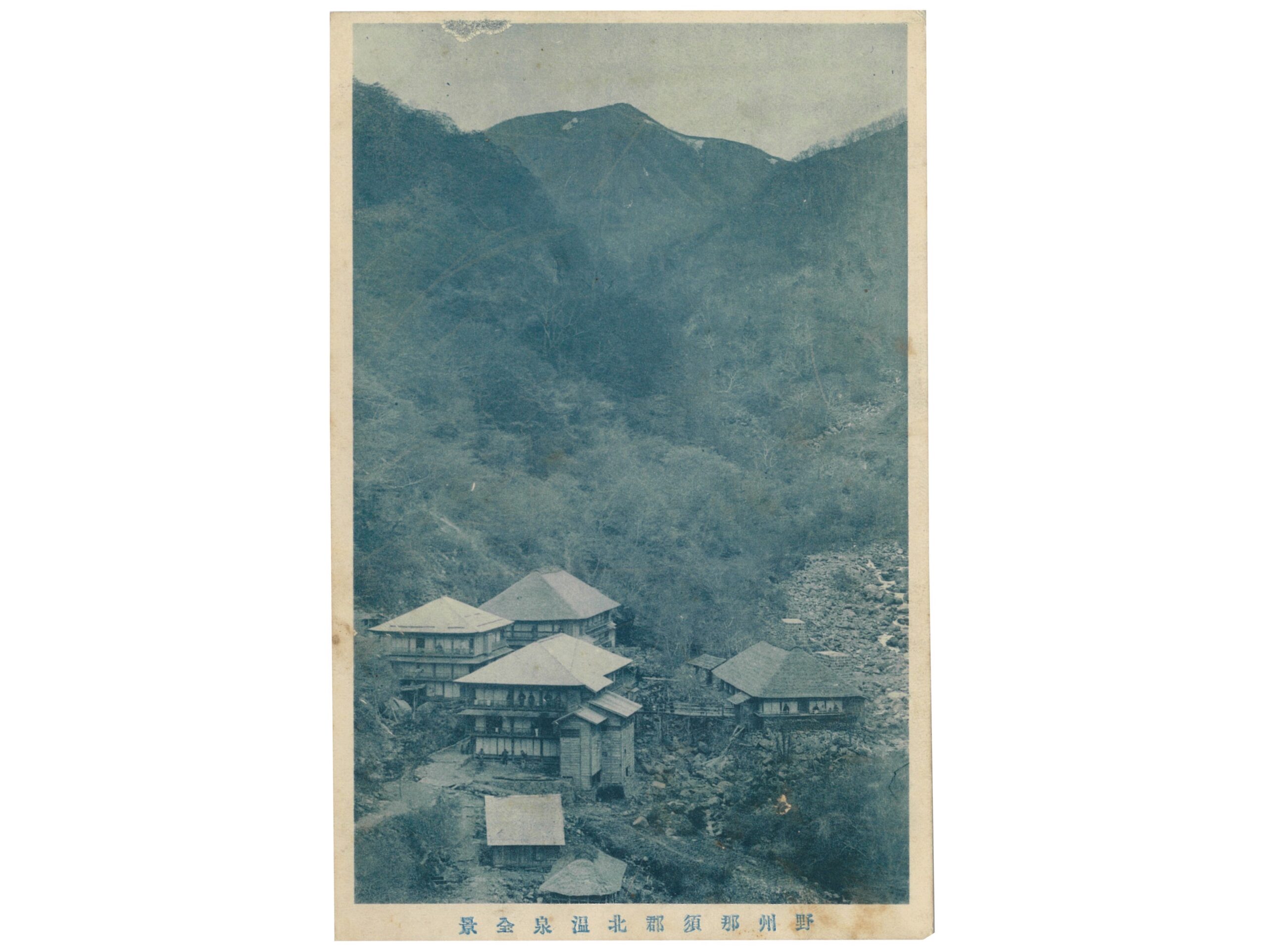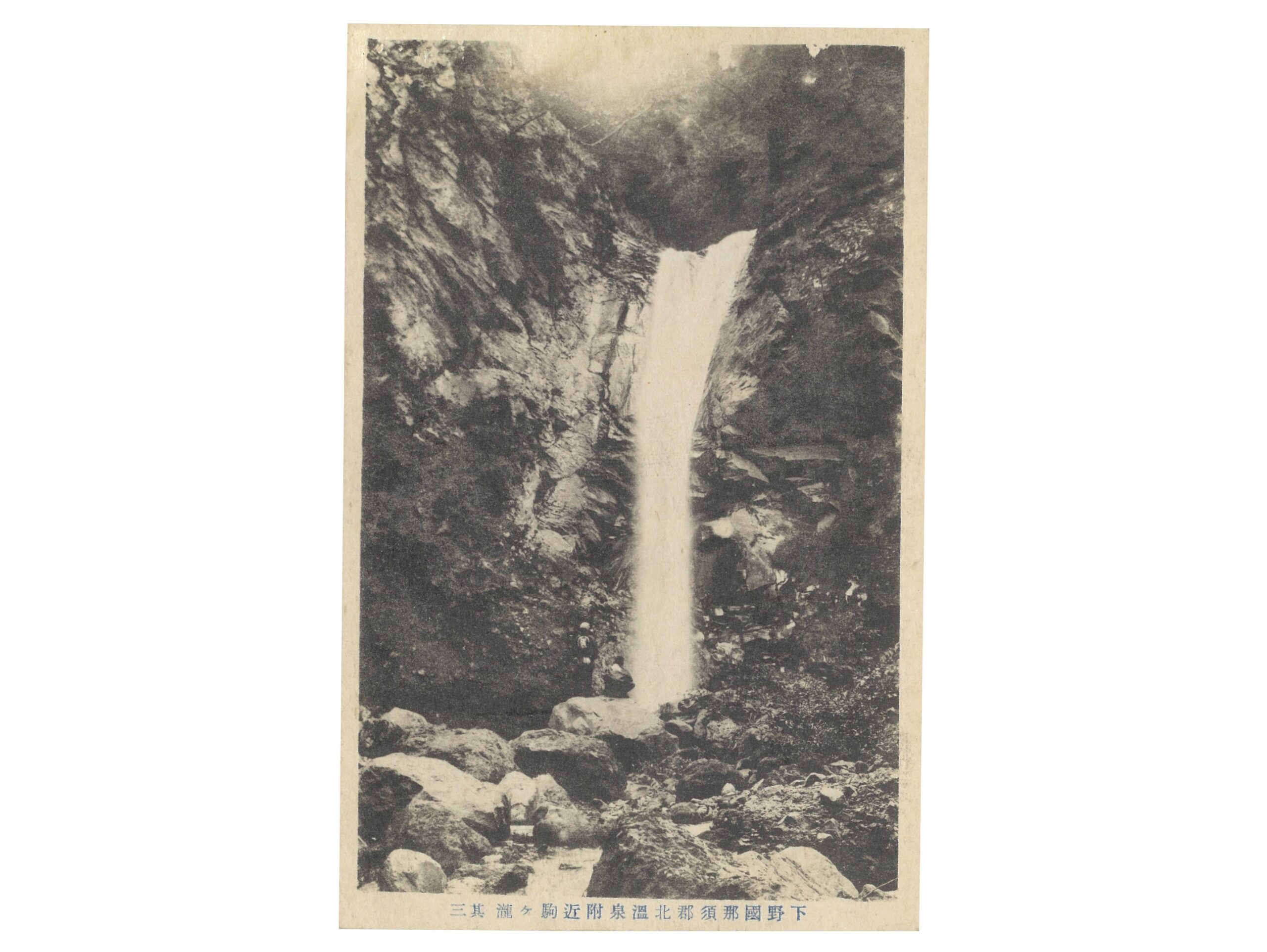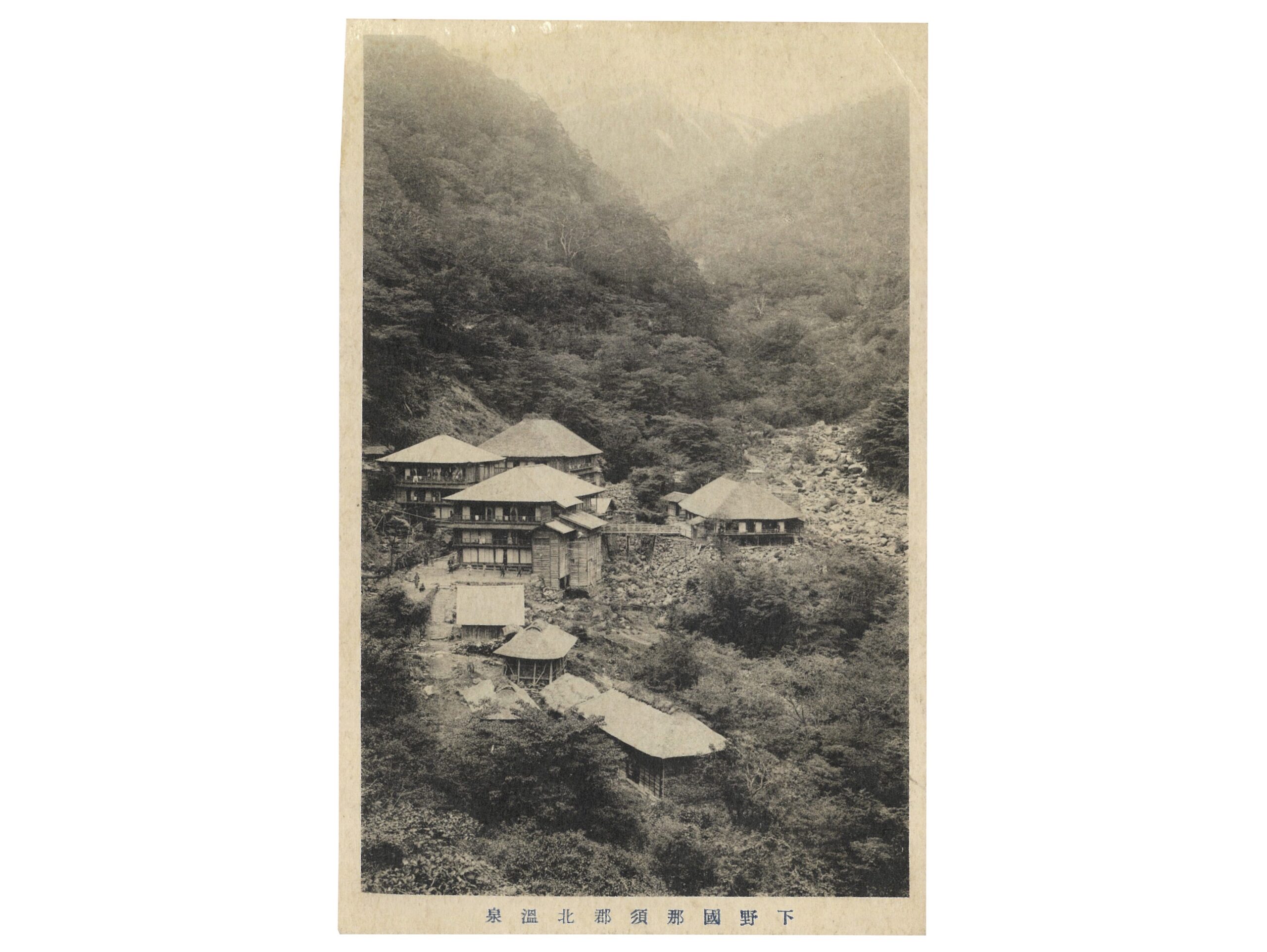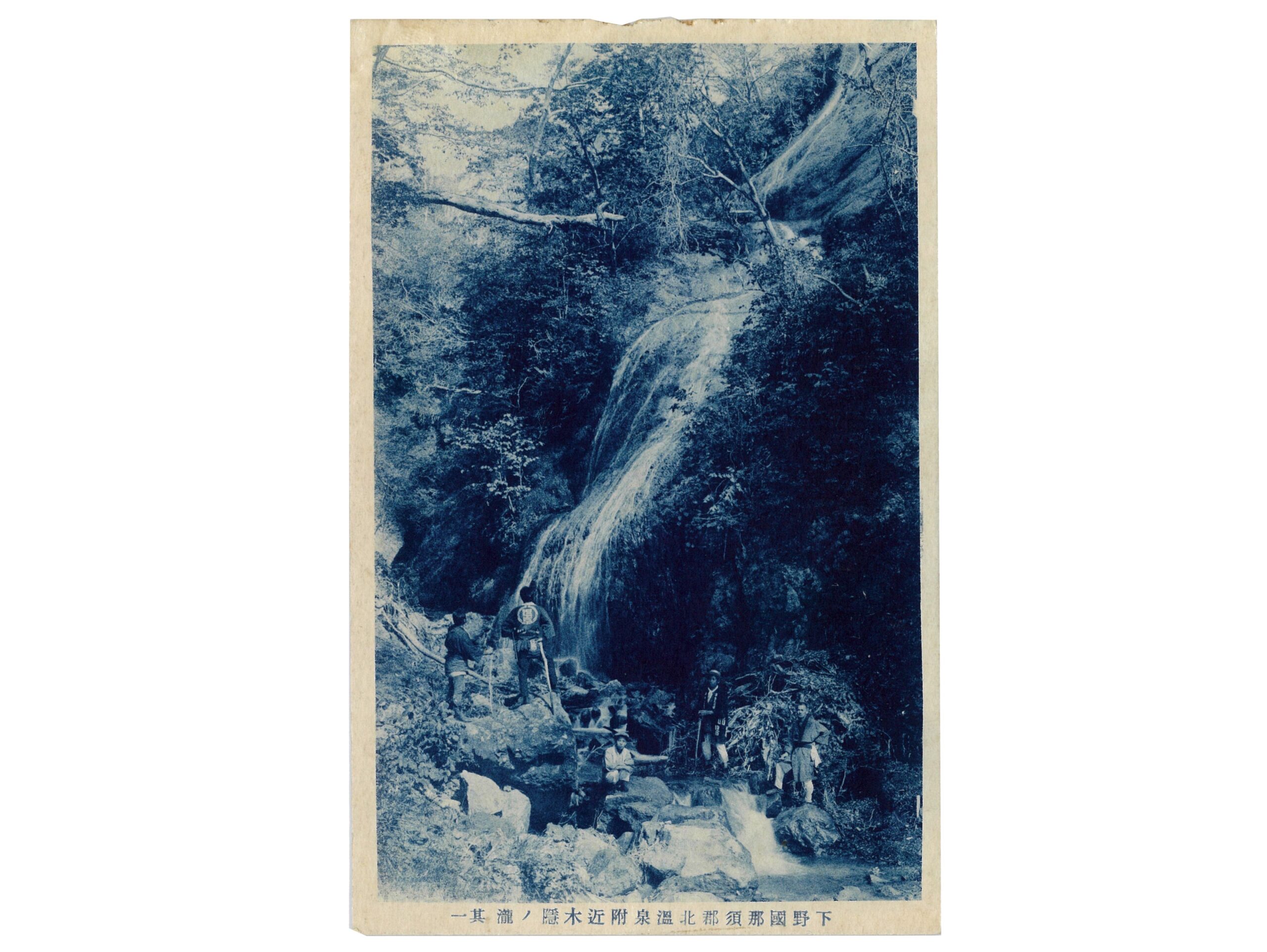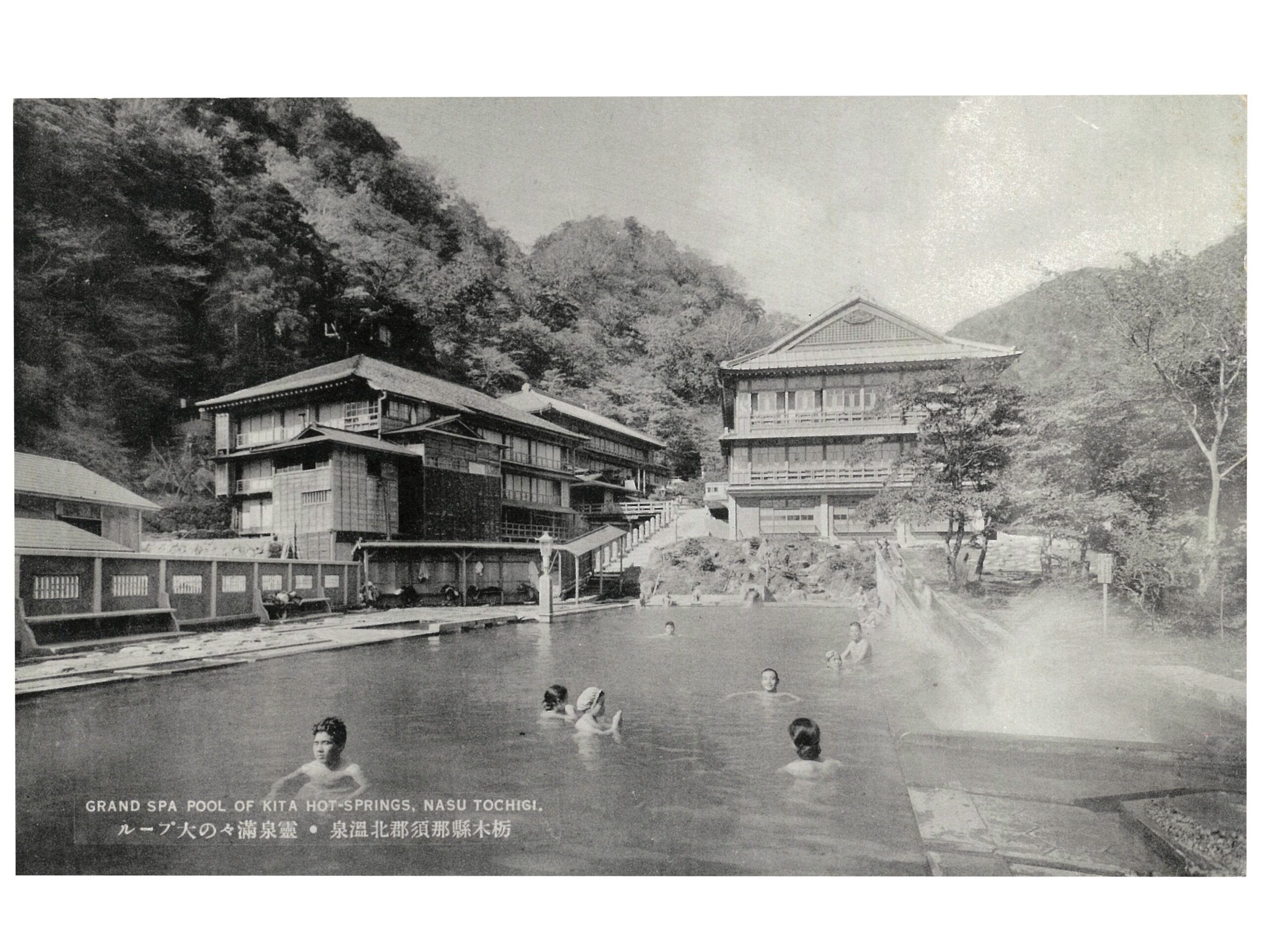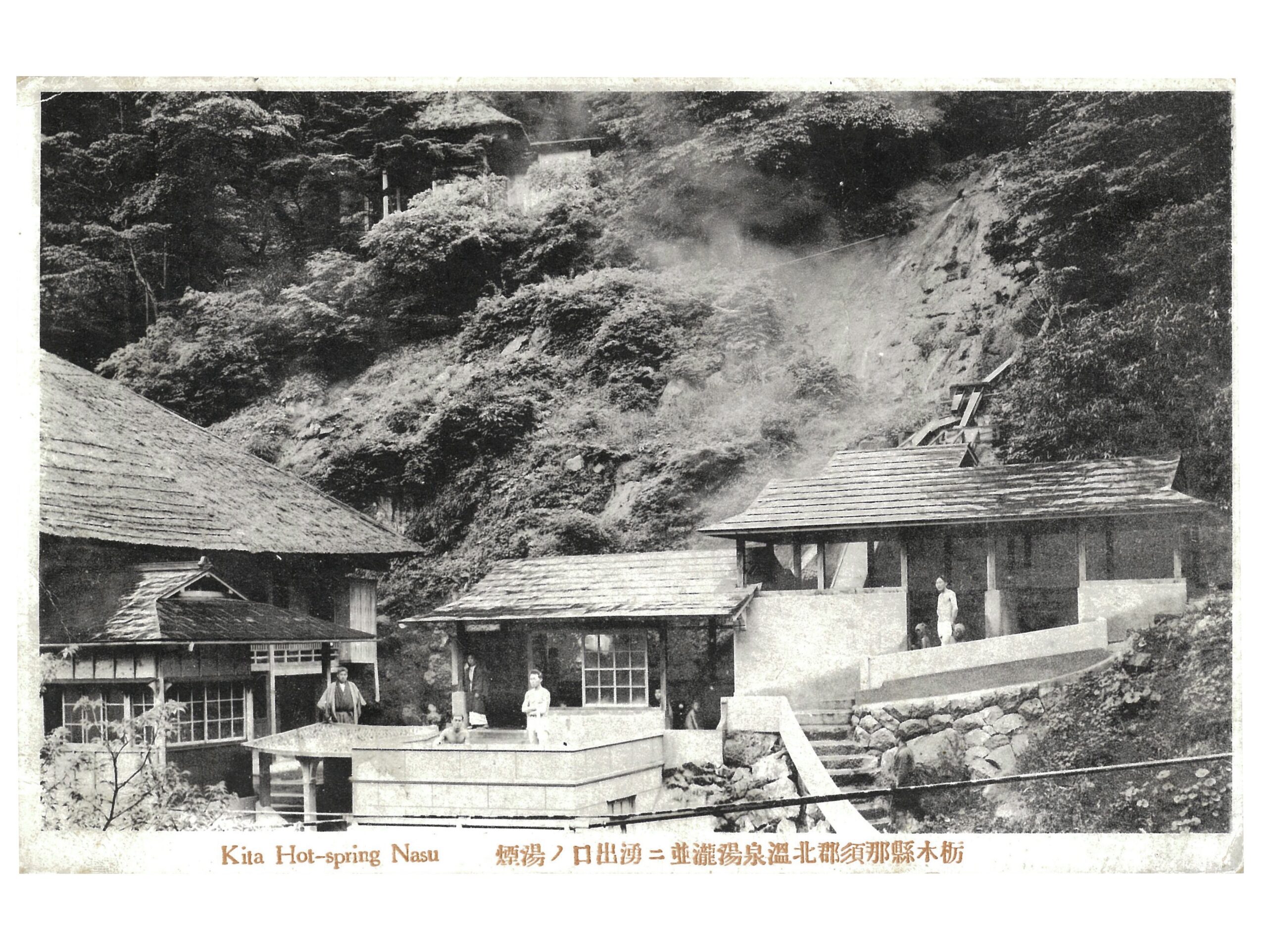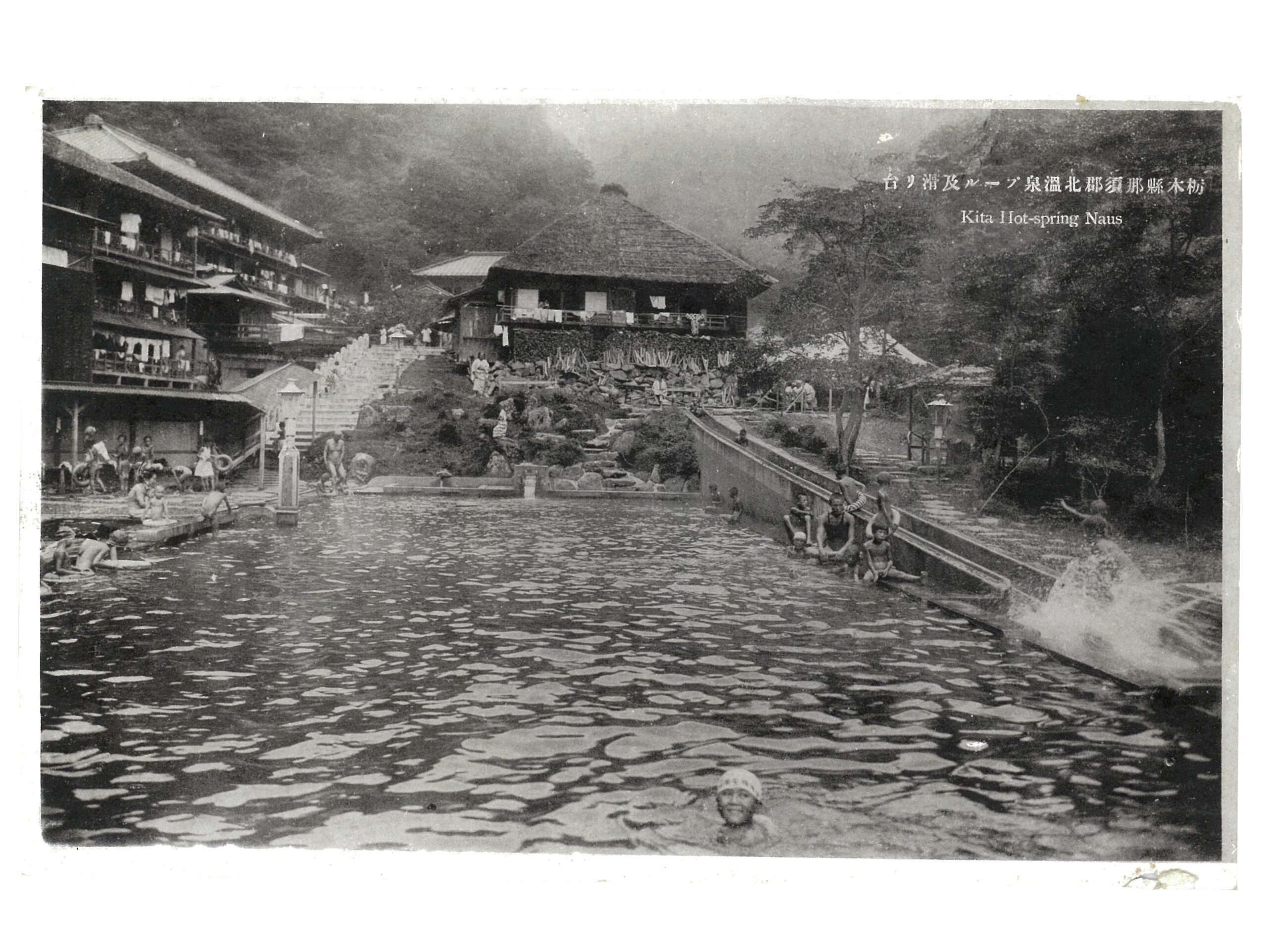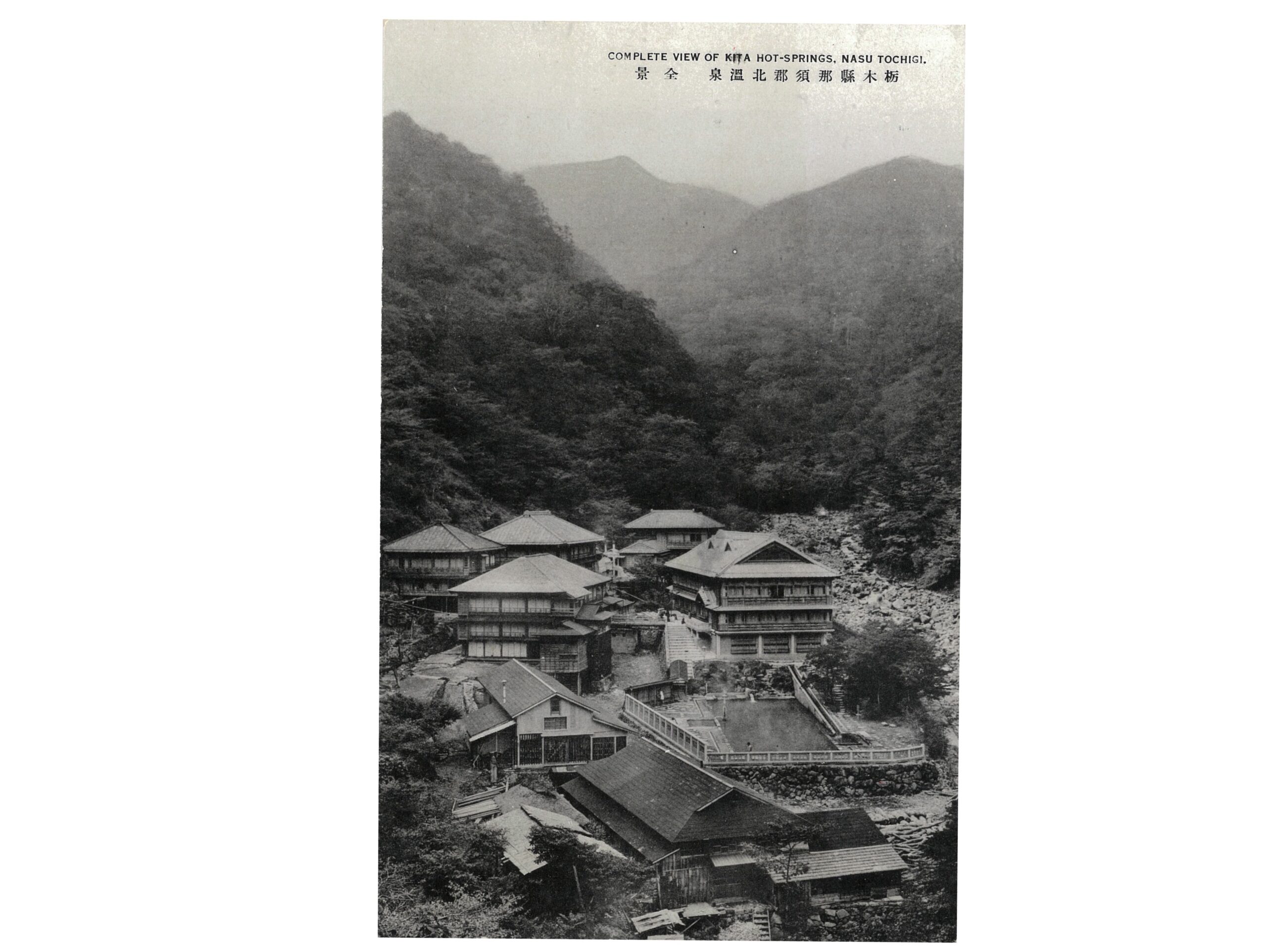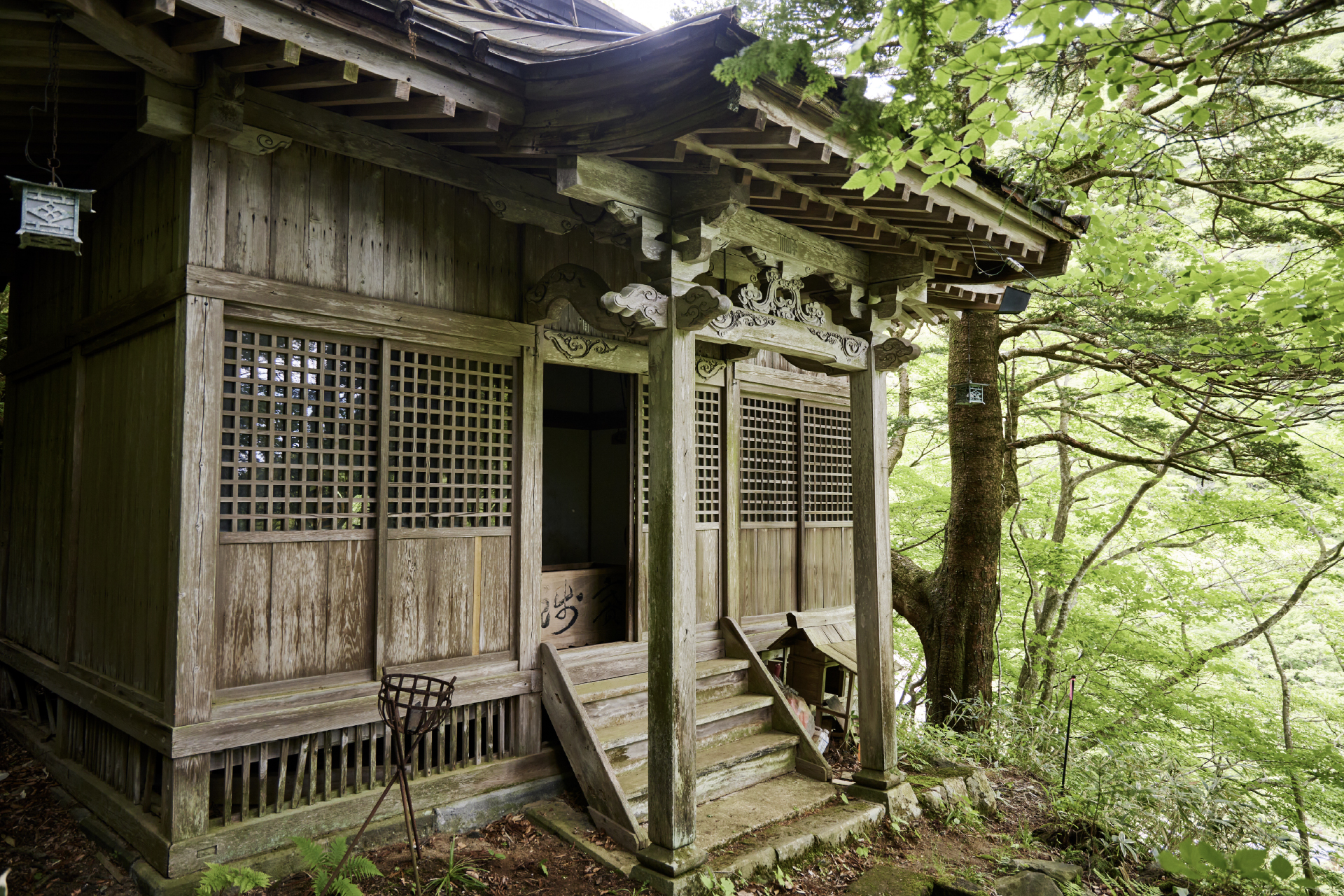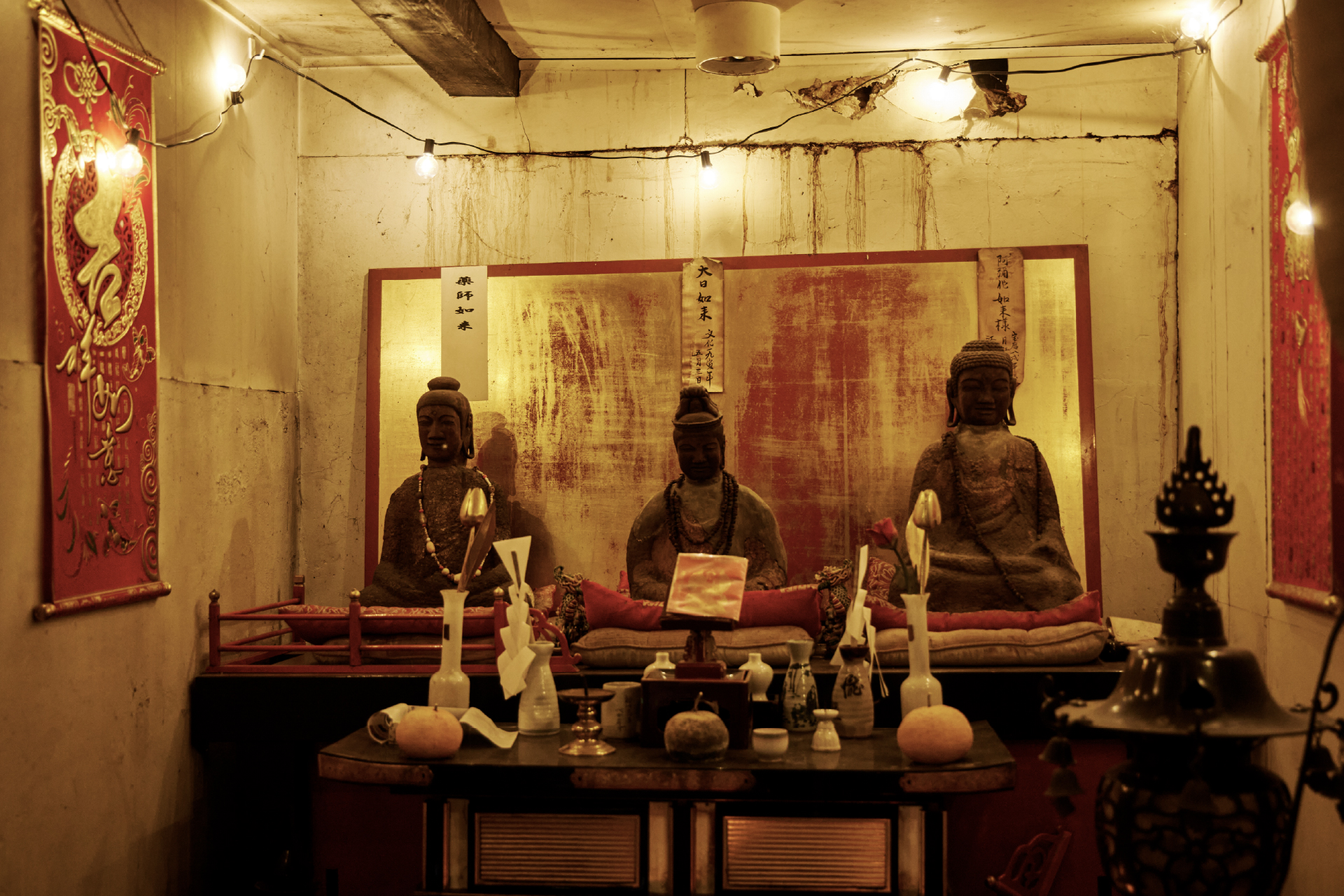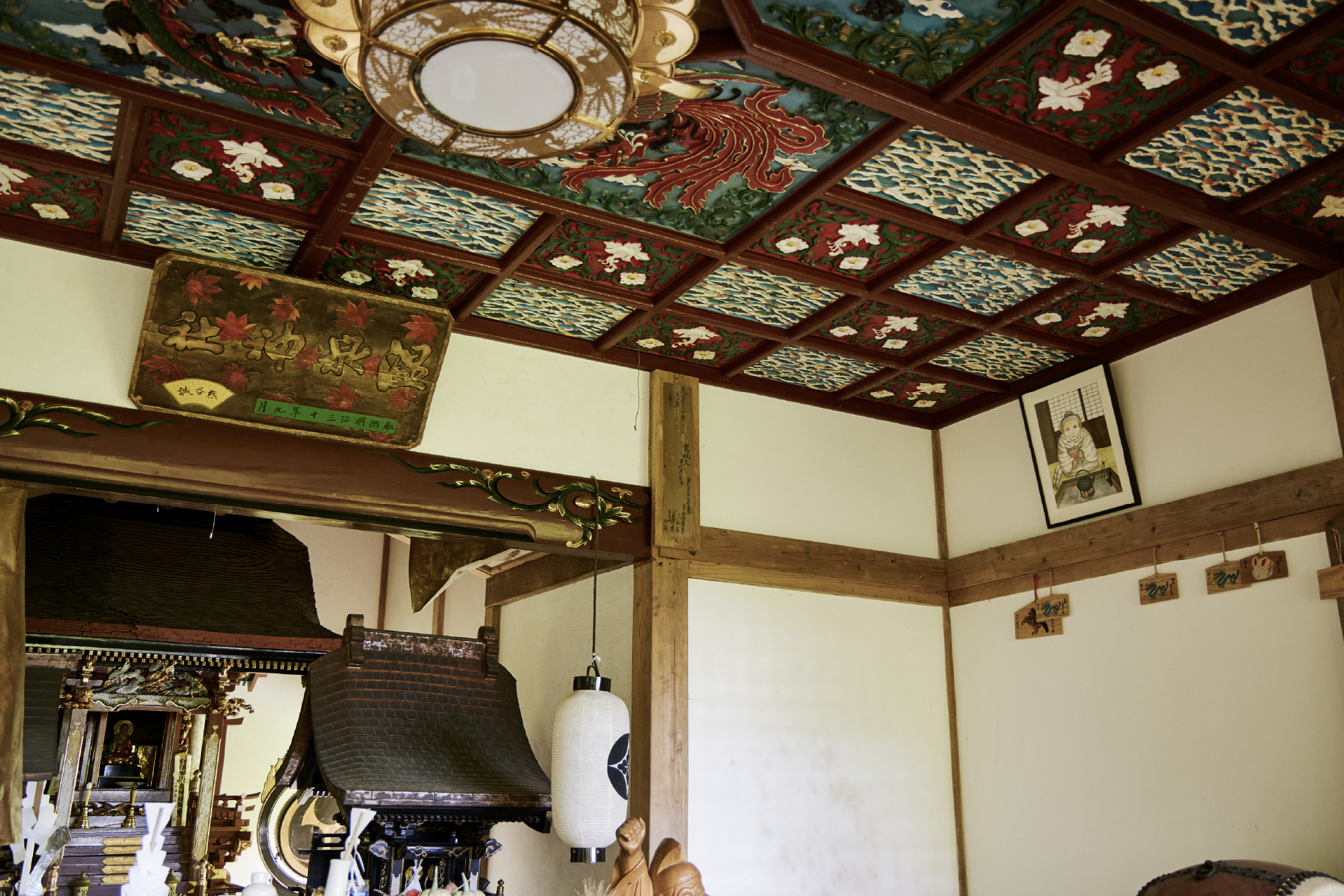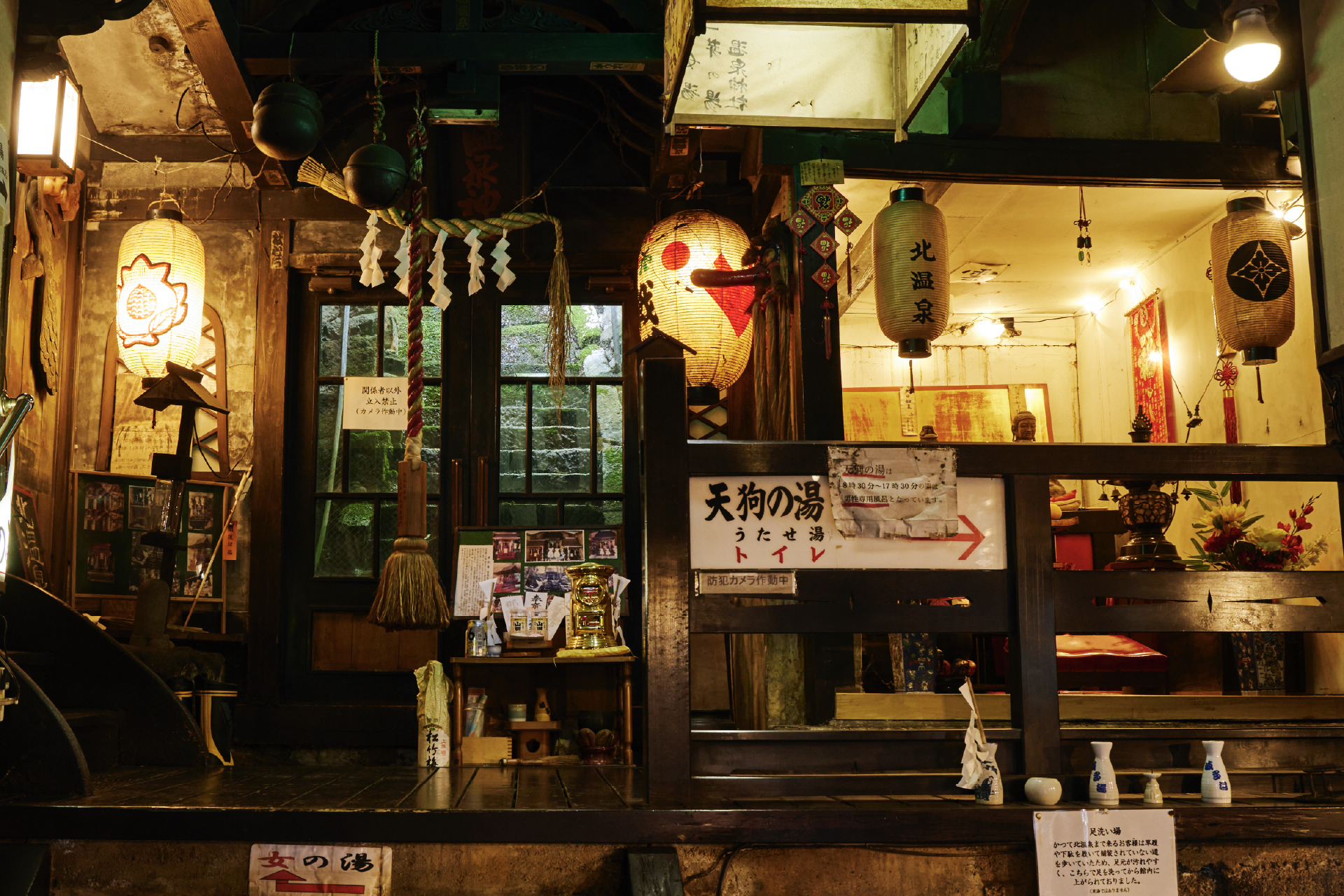About Kita Onsen
歴史
History
A 170-Year Legacy of Kita Onsen Ryokan, Preserved to This Day
Since its founding in the Ansei era of the late Edo period,
Kita Onsen Ryokan has provided comfort and healing to countless visitors
through six eras: Meiji, Taisho, Showa, Heisei, and Reiwa.
Edo Period (1603–1868)
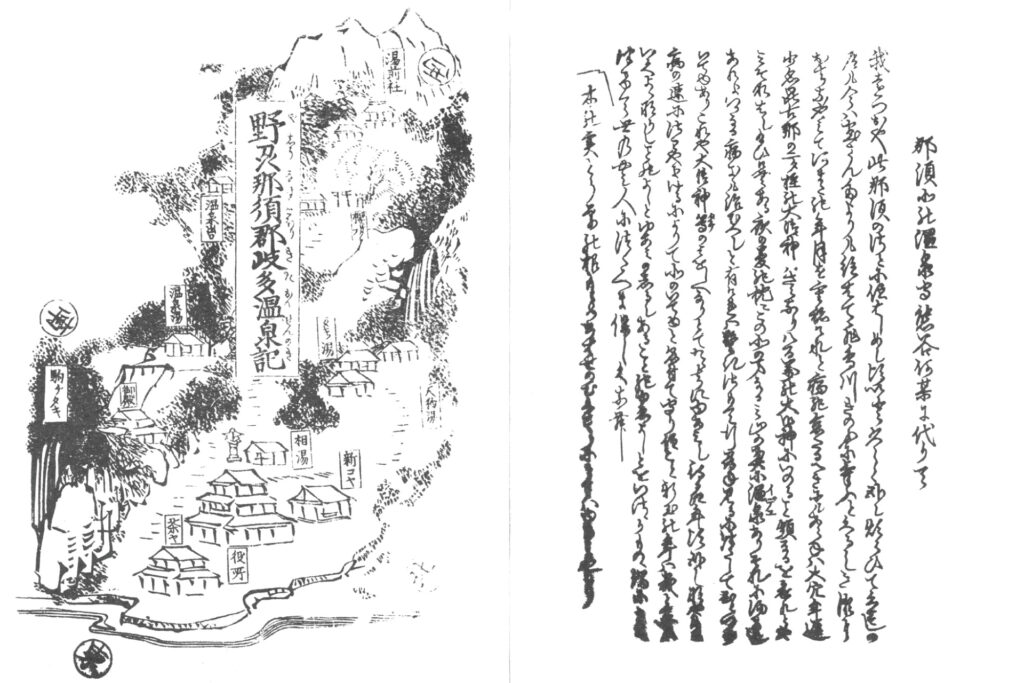
▲ Edo-period brochure of “Kita Onsen” printed from a woodblock: “The Record of Kita Onsen in Yashu Nasu County”
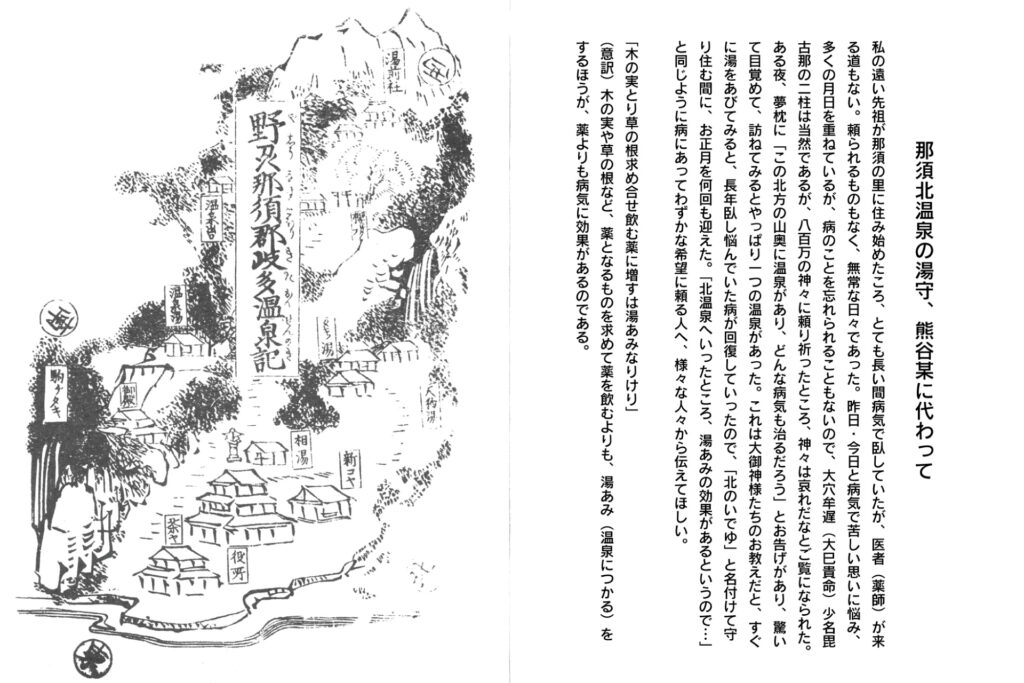
▲ Modern Japanese translation available
During this era, the Kita hot spring was governed by the Ozeki clan of the Kurobane Domain. Due to the many sources of spring water branching out in different directions, the name was written as “岐多温泉” (Kita Onsen, with the character 岐 meaning “fork” or “branch”). Over time, the characters were standardized to the current form: “北温泉” (Kita Onsen, with 北 meaning “north”).
The oldest existing guest room, Matsu-no-Ma (Pine Room), along with the Kishimojin shrine and the Onsen Shrine, are believed to have been established during this period.

Meiji Period (1868–1912)
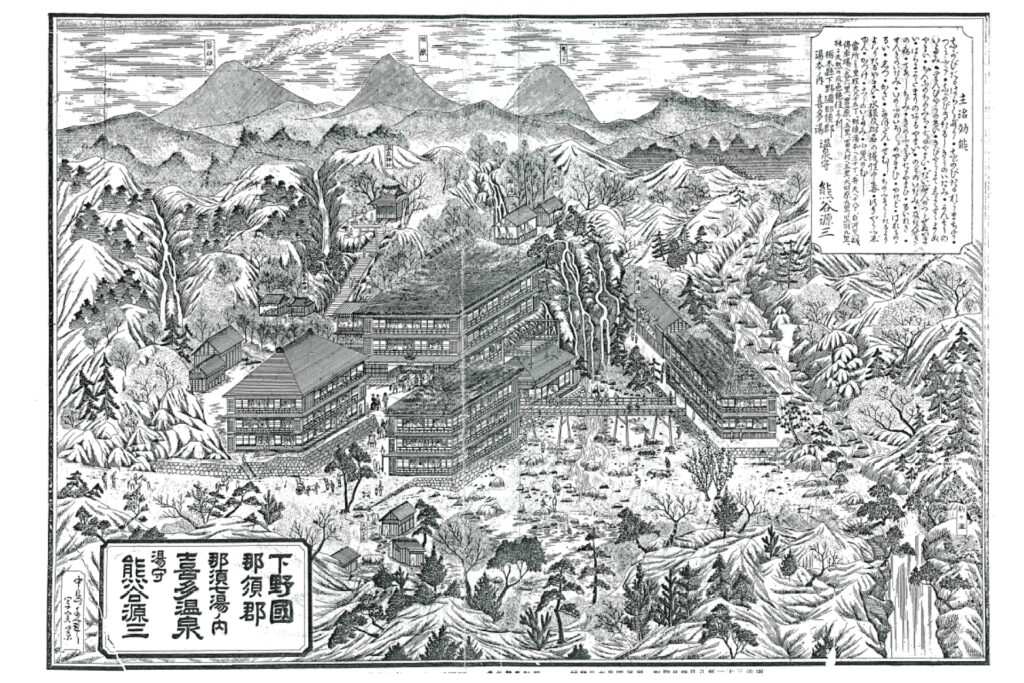
▲Panoramic brochure of Kita Onsen published in 1898 (Meiji 31)
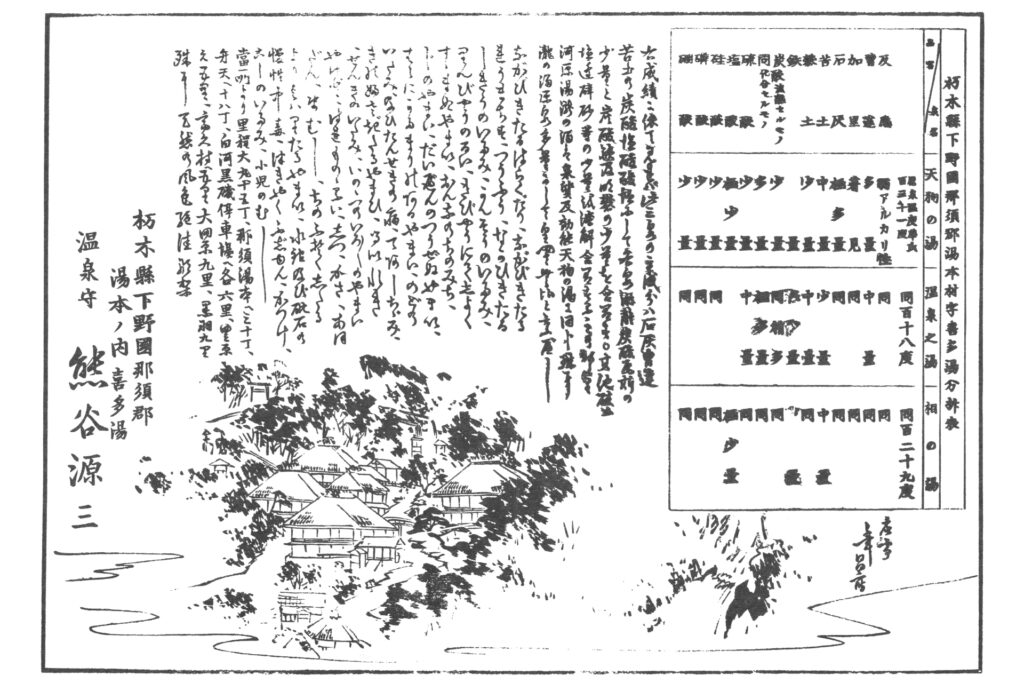
▲Hot spring mineral analysis chart published in early Meiji period
During this time, the guest room Take-no-Ma (Bamboo Room) was built, and Genzo Kumagai became the first official Yumori (hot spring caretaker).
The development of the railroad and the prefectural road between Kuroiso and Nasu Yumoto led to an increase in tourism promotion, including brochures and pamphlets that introduced the hot springs of Nasu. Kita Onsen was also featured in many of these materials.

Taisho & Showa Periods (1912–1926 / 1926–1989)
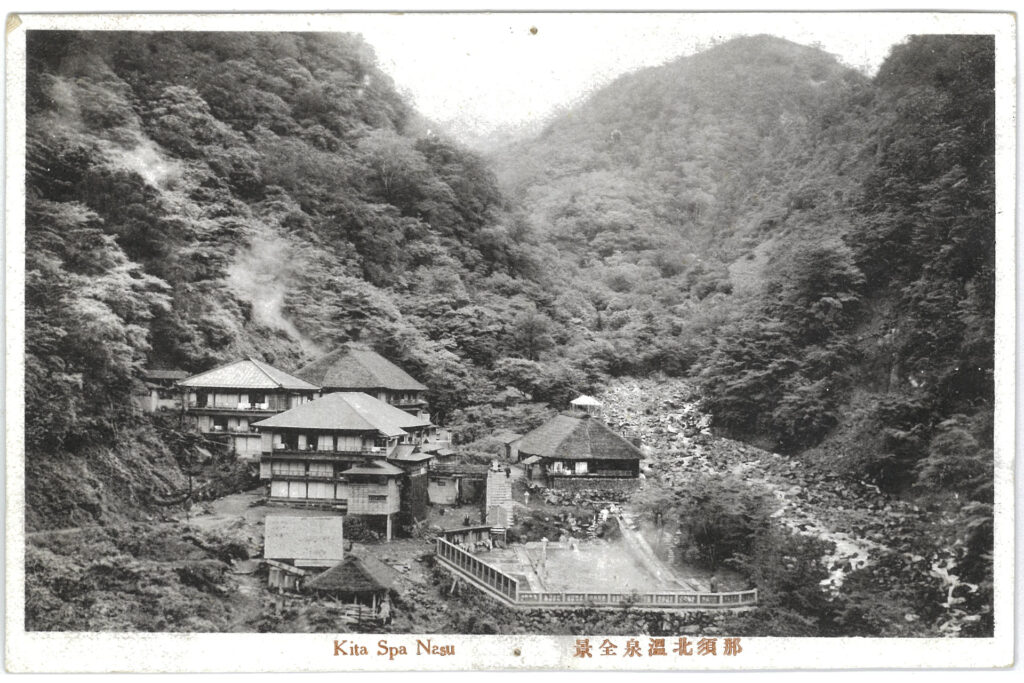
※Materials archived at the Nasu History Exploration Museum
With the advancement of photography and printing technologies, tourist postcards featuring scenic destinations became popular. Many images of Kita Onsen from this time still remain, offering glimpses into its past.
In 1938 (Showa 13), a typhoon brought heavy rain that caused a landslide on the mountainside behind the inn, sweeping away part of the building. Today, a protective erosion-control dam built at the rear of the property safeguards Kita Onsen from similar disasters.

Heisei & Reiwa Periods (1989–2019 / 2019–present)
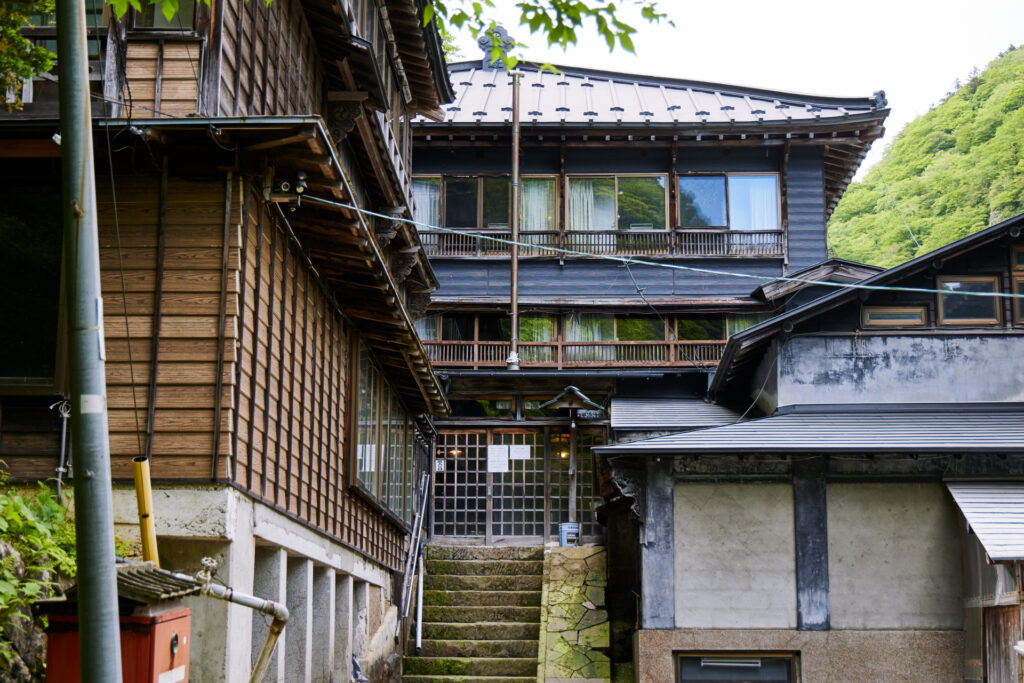
In recent years, Kita Onsen has been featured in films and TV programs, increasing its recognition not only within Japan but also among international visitors.
We continue to preserve the cultural heritage and long history of Kita Onsen, passing it on to future generations.

Archive
※Nasu Historical Museum Collection
 Matsukawaya: Nasu Onsen Guide, Published May 1928 (Showa 3)
Matsukawaya: Nasu Onsen Guide, Published May 1928 (Showa 3) Famous Spots of Nasu Onsen (Front), June 5, 1922 (Taisho 11)
Famous Spots of Nasu Onsen (Front), June 5, 1922 (Taisho 11) Famous Spots of Nasu Onsen (Back), June 5, 1922 (Taisho 11)
Famous Spots of Nasu Onsen (Back), June 5, 1922 (Taisho 11) Nasu Onsen Promotion Association, August 1935 (Showa 10)
Nasu Onsen Promotion Association, August 1935 (Showa 10) Published by the Nasu Onsen Ryokan Association: Skiing in Nasu
Published by the Nasu Onsen Ryokan Association: Skiing in Nasu Nasu Onsen Ryokan Association
Nasu Onsen Ryokan Association Komatsuya Ryokan: Nasu Onsen Guide (Date Unknown)
Komatsuya Ryokan: Nasu Onsen Guide (Date Unknown) Komatsuya Ryokan, Published May 25, 1924 (Taisho 13)
Komatsuya Ryokan, Published May 25, 1924 (Taisho 13)
 Matsukawaya: Nasu Onsen Guide, Published May 1928 (Showa 3)
Matsukawaya: Nasu Onsen Guide, Published May 1928 (Showa 3) Famous Spots of Nasu Onsen (Front), June 5, 1922 (Taisho 11)
Famous Spots of Nasu Onsen (Front), June 5, 1922 (Taisho 11) Famous Spots of Nasu Onsen (Back), June 5, 1922 (Taisho 11)
Famous Spots of Nasu Onsen (Back), June 5, 1922 (Taisho 11) Nasu Onsen Promotion Association, August 1935 (Showa 10)
Nasu Onsen Promotion Association, August 1935 (Showa 10) Published by the Nasu Onsen Ryokan Association: Skiing in Nasu
Published by the Nasu Onsen Ryokan Association: Skiing in Nasu Nasu Onsen Ryokan Association
Nasu Onsen Ryokan Association Komatsuya Ryokan: Nasu Onsen Guide (Date Unknown)
Komatsuya Ryokan: Nasu Onsen Guide (Date Unknown) Komatsuya Ryokan, Published May 25, 1924 (Taisho 13)
Komatsuya Ryokan, Published May 25, 1924 (Taisho 13)
 Panoramic View of Kita Onsen, Yashu Nasu District
Panoramic View of Kita Onsen, Yashu Nasu District Komagataki Waterfall near Kita Onsen, Nasu Town, Shimotsuke Province
Komagataki Waterfall near Kita Onsen, Nasu Town, Shimotsuke Province Kita Onsen, Nasu District, Shimotsuke Province
Kita Onsen, Nasu District, Shimotsuke Province Kakurenbo Falls near Kita Onsen, Nasu Town, Shimotsuke Province
Kakurenbo Falls near Kita Onsen, Nasu Town, Shimotsuke Province Kita Onsen, Nasu District, Tochigi Prefecture – Sacred Spring-Filled Pool
Kita Onsen, Nasu District, Tochigi Prefecture – Sacred Spring-Filled Pool Kita Onsen, Nasu District – Steam Rising from the Hot Spring Source
Kita Onsen, Nasu District – Steam Rising from the Hot Spring Source Panoramic View of Kita Onsen: Pool and Slide, Nasu District, Tochigi Prefecture
Panoramic View of Kita Onsen: Pool and Slide, Nasu District, Tochigi Prefecture Panoramic View of Kita Onsen, Nasu District, Tochigi Prefecture
Panoramic View of Kita Onsen, Nasu District, Tochigi Prefecture
 Panoramic View of Kita Onsen, Yashu Nasu District
Panoramic View of Kita Onsen, Yashu Nasu District Komagataki Waterfall near Kita Onsen, Nasu Town, Shimotsuke Province
Komagataki Waterfall near Kita Onsen, Nasu Town, Shimotsuke Province Kita Onsen, Nasu District, Shimotsuke Province
Kita Onsen, Nasu District, Shimotsuke Province Kakurenbo Falls near Kita Onsen, Nasu Town, Shimotsuke Province
Kakurenbo Falls near Kita Onsen, Nasu Town, Shimotsuke Province Kita Onsen, Nasu District, Tochigi Prefecture – Sacred Spring-Filled Pool
Kita Onsen, Nasu District, Tochigi Prefecture – Sacred Spring-Filled Pool Kita Onsen, Nasu District – Steam Rising from the Hot Spring Source
Kita Onsen, Nasu District – Steam Rising from the Hot Spring Source Panoramic View of Kita Onsen: Pool and Slide, Nasu District, Tochigi Prefecture
Panoramic View of Kita Onsen: Pool and Slide, Nasu District, Tochigi Prefecture Panoramic View of Kita Onsen, Nasu District, Tochigi Prefecture
Panoramic View of Kita Onsen, Nasu District, Tochigi Prefecture
伝説
The Legend
Legends of Gods and Spirits Remaining in Kita Onsen
We present a selection of legends that have been passed down through generations over the long history of Kita Onsen.
Tengu’s Boulder
Around the Heian Era (AD784~end 12th century) Mount Nikko, Mount Nasu and Mount Haguro were religious sites of Japanese Mountain Worship incorporating Shinto and Buddhist concepts. As such, they were frequented by believers undergoing ascetic training.
It is thought that Tengu was the name given to these believers. They were a proud, war-mongering group feared everywhere.
Legend has it that a Tengu was on the road from Mount Nikko to Mount Haguro when he sat down to rest on a large boulder. Noticing hot water seeping out, in a moment of inspiration he shouldered the huge boulder and threw it high into the air. When it finally fell to earth, a torrent of boiling thermal water flowed from under it. The legend lives on! The thermal spring has been gushing forth ever since! The boulder is still there! See if you can find it! (hint: look around the Onsen Pool).
Onsen Jinja Shrine
Located in front of the Tengu thermal spring, the shrine is referred to as Yuzensama. As Mount Nasu was previously known as a sacred mountain, Kita Onsen was believed to be a meeting place of the Gods. I guess they enjoy a good Onsen soak as much as we do.
The present Onsen Jinja Shrine was constructed in 1750 and is dedicated to a number of Gods important to the thermal spring.
The three stone Buddha Statues at the entrance to the path to the Shrine are headless as they were smashed during the anti-Buddhist movement in the early Meiji Period.
If you wish to see these, please inquire at Reception.


